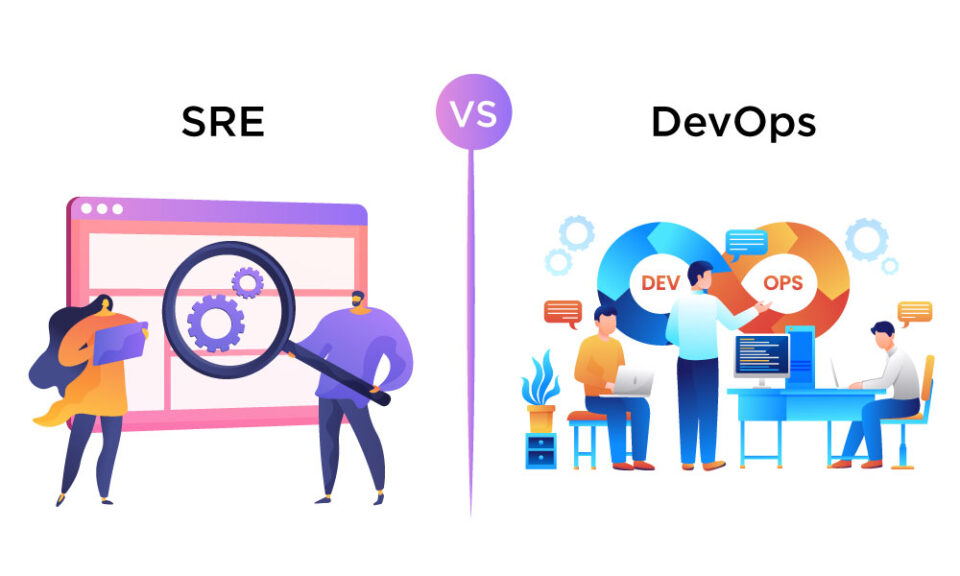Site reliability engines enhance how businesses manage and scale their online services. Online services such as websites, apps, and cloud-based systems have to be definitive in providing reliable, secure, and user-friendly experiences for their users. They must have the ability to work with high performance to meet customer's expectations and competitive advantage so that the work runs smoothly and hassle-free. That's where site reliability engineering comes in. Site reliability engine is a hybrid discipline that merges software engineering and operations to ensure that the systems are reliable, scalable, and highly efficient. In this article we will explore all about SRE.
What is Site Reliability Engineering?
Site Reliability Engineering integrates software engineering techniques to address challenges in infrastructure and operations. It is a Google invention that has become an essential key practice in many organizations that are looking for higher reliability and performance in their services. Essentially, a site reliability engine is about ensuring that software applications run smoothly, handle large volumes of traffic, and remain available to users.
The Evolution of SRE
Site reliability engine was introduced by a Google engineer, Ben Treynor Sloss. This brought a revolution in the IT industry as it shifted the focus from traditional operations to proactive engineering-driven methodology. Earlier, IT operations and software development were considered as two different disciplines. Where operation teams were handling infrastructure management and ensuring the systems were up-to-date and running smoothly, at the same time, developers were focusing on building new features, which led to communication problems and inefficiencies between them.
These issues were addressed by SRE. The idea was to blend the roles of software engineers and operations specialists. By doing so, organizations could leverage engineering techniques to improve the reliability and performance of their systems of an enterprise. Many companies adopted the site reliability engine approach, each tailoring to fit their specific demands and environments.
Core Principles of SRE
Embracing Risk: As the need for rapid innovation arises, site reliability engine balance's reliability, by focusing on risk management and setting realistic service level objectives (SLOs) for the same. It detects that 100% reliability is neither attainable nor financially viable.
Service Level Objectives (SLOs): SLO recognizes the level of service users, as for service reliability, SLOs are specific targets. The recognition is measured in terms of availability, latency, and other performance metrics in different cases. This helps teams stay focused on what is crucial for users and use them to prioritize their work accordingly.
Error Budgets: An error budget consists of acceptable violations defined by the SLO. For example, the error budget of SLO for 99.9%, allows for a certain amount of time-out. This concept helps balance the need for innovation with maintaining reliability. When error budget is exhausted, teams should prioritize resolving existing issues over adding new features.
Monitoring and Metrics: One of the main concerns of SRE is effective monitoring. This includes data collection and analysis about system performance to detect impending problems that could affect users. To make sure that the services meet their SLOs, site reliability engine monitors metrics such as response time, error rates, and system load.
Incident Management: The normal service operation program can be disrupted by any incident. To manage such cases site reliability engines must have a well-defined process for handling such incidents. This may include detection, response, and resolution.
Capacity Planning: Capacity planning calculates the need for resources which occurs due to current usage trends and expected growth. This makes sure that the infrastructure can handle more load and stay reliable and efficient. Site reliability engines use this information to ensure that systems can handle increased load without compromising performance or reliability.
Monitoring and Observability: Effective monitoring and observability are important as it maintains system reliability. SREs use different types of tools to collect metrics, logs, and traces. This way it gains insights into system performance. It identifies the problems before they get into critical situations.
Automation: Automation is a crucial aspect of site reliability engine. Teams can reduce human error by automating repetitive tasks such as deployments, monitoring, and incident response. This way they can increase efficiency. Due to automation, engineers get time to focus on more strategic work.
The Role of an SRE
Site reliability engine's role is multifaceted. It involves or it is a combination of software development, system administration, and operations. Key responsibilities include:
Building and Maintaining Infrastructure: Site reliability engine design and develop the infrastructure which supports software applications.
Capacity Planning: SRE includes demand forecasting, resource management, and performance optimization to ensure they meet expected and unexpected loads.
Performance Tuning: To make sure applications run smoothly and efficiently, Site reliability engines continuously monitor and optimize system performance.
Responding to Incidents: Site reliability engine responds to incidents, and it mitigates issues to reduce downtime.
Tools and Technologies
Site reliability engines use a wide range of tools and technologies to achieve their goals, which include:
Monitoring Tools: Prometheus, Grafana, Datadog
Logging Tools: ELK Stack (Elasticsearch, Logstash, Kibana) and Splunk
Automation Tools: Ansible, Terraform, Kubernetes
Incident Management Tools: PagerDuty, Opsgenie, VictorOps

SRE vs. DevOps
SRE and DevOps have the same goals, but they act toward these goals in a different way. To improve system reliability, both aim to enhance collaboration between development and operations teams. However, site reliability engine is more prescriptive and focuses on applying specific engineering practices to operations. It looks for measurable objectives like SLOs and error budgets.
DevOps is a vast cultural and technical movement that fills the gap between development and operations. It stimulates continuous integration (CI) and continuous delivery (CD) practices.
Implementing SRE
Implementing site reliability engine requires a shift in mindset and practices. Here are some steps organizations can take to adopt site reliability engine principles:
Define SLOs: Define clear SLOs for your services to understand the expectations and translate them into measurable targets. This will guide and prioritize your work.
Set Up Monitoring and Metrics: To collect relevant metrics and to track system performance, monitor the solutions, and set up the monitoring and metrics of the system. This will ensure visibility into key aspects of your services, such as response times, error rates, and resource utilization.
Incident Management Process: By creating documentation and runbooks to guide your team through several incident types, develop a structured incident management process that includes detection, response, and resolution.
Invest in Automation: To reduce human error, identify repetitive tasks and automate them; this will improve efficiency. Focus on areas like deployment, monitoring, and incident response for better results.
Conduct Regular Reviews: Perform regular reviews of incidents and system performance analysis to identify areas for improvement. Use these reviews to refine your processes and update your SLOs as per requirement.
Foster a Culture of Reliability: Make reliability a shared responsibility. Support collaboration between development and operations teams. Provide training on SRE principles and practices.
Benefits of SRE
Improved Reliability: To get better user experience and customer satisfaction, site reliability engines ensure that systems are resilient and robust by focusing on reliability.
Enhanced Efficiency: Automation and streamlined processes reduce the time spent on routine tasks and incidents. This makes teams focus on innovation and strategic work.
Enhanced Collaboration: They foster the collaboration between development and operations teams. It breaks down the silos and improves overall efficiency.
Faster Incident Response: With well-defined processes combined with automation, site reliability engines can quickly identify and resolve the issues.
Better Alignment with Business Goals: SLOs and error budgets ensure that efforts for reliability are aligned with business priorities. Teams can focus on what really matters for the users and balance the need for new features with maintaining the quality of the service.
Proactive Issue Management: Monitoring and metrics allow teams to detect potential issues before they affect their users. This proactive approach minimizes downtime and improves the performance of the overall system.
Continuous Improvement: Continuous improvement requires frequent review and retrospectives. Teams can learn from incidents and make data-driven or informed decisions about enhancing the system.
Cost Efficiency: SRE leads to significant cost savings by optimizing resource usage and reducing downtime.
Challenges and Considerations
Along with advantages, site reliability engine has to face challenges also:
Cultural Shift: Adopting site reliability engine needs a cultural shift in the organization. Teams must embrace new practices and collaborate more closely to achieve shared goals.
Complexity: Implementing SRE can get quite complex, especially when an organization needs to manage a large and disparate set of systems. This needs careful planning and execution to align with existing processes and infrastructure.
Resource Investment: Site reliability engine initiatives may require an investment in tools, training, and personnel. Organizations should prepare to invest in resources to support the transition.
Balancing Innovation and Reliability: Balancing the need for new features with maintaining reliability is quite challenging. Site reliability engine helps manage this balance through error budgets, but it requires careful planning and prioritization.
Skill Set: Site reliability engines need a unique skill set that includes software development, system administration, and operations. It is rather challenging to find people who possess this combination of skills.
Tooling and Automation: It needs investment and skill to make the right tooling and automation processes.
Final Words!
Site Reliability Engineering represents the revolutionary manner of combining the best practices of software engineering with the best practices of operations into one reliable, scalable system. Embracing risk, realistic objectives, and automation empowers SRE. This makes sure that systems are robust and resilient. Thus, site reliability engines will keep evolving in this field to shape the future of reliable software systems.
To know more about SRE, visit us at WisdomPlexus!




